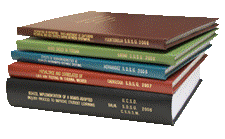Libraries, University of Nebraska-Lincoln

Archival Master’s Theses from the University of Nebraska-Lincoln
Date of this Version
1956
Document Type
Thesis
Citation
Thesis (M.S.)--University of Nebraska--Lincoln, 1956. Department of Agronomy.
Abstract
A field plot study involving comparative effects of soil fumigation on certain biological, chemical, and physical properties of stubble mulched and plowed soil was made. Stubble mulched plots had been subtilled nine years previous to treatment. Soil fumagants, Ethylene dibromide and D-D, were hand injected into the soil at a depth of 6 inches, and at the rate of 30 gallons per acre. Soil samples were taken at the 0-1 and 1-6 inch depths, 17 and 72 days after treatment; refrigerated at 40°F, and analyzed for total counts, fungi, denitrifiers, nematodes, nitrate-nitrogen, acid soluble phosphorus, pH, and percent soil aggregation.
Soil fumigation did not affect stubble mulched plots significantly different than plowed plots. Nematodes were the most seriously affected by fumigants of the micro-organisms studied. Aerobic bacteria, actinomycetes, and denitrifiers were observed in significantly greater numbers in fumigated than nonfumigated plots. No significant difference was observed in the effectiveness of one fumigant over the other except for a reduction of nitrate-nitrogen by D-D and a decrease in percent soil aggregation by Ethylene dibromide. Stubble mulched plots contained significantly greater nematodes than plowed plots. Soil fumigation had little or no effect on the yield of wheat planted 18 days after fumigation. A significant difference, however, was observed as a result of the tillage system, with stubble mulched plots averaging 12 bushels per acre more grain than plowed plots.
Advisor: T. M. McCalla.


Comments
Copyright 1956, the author. Used by permission.